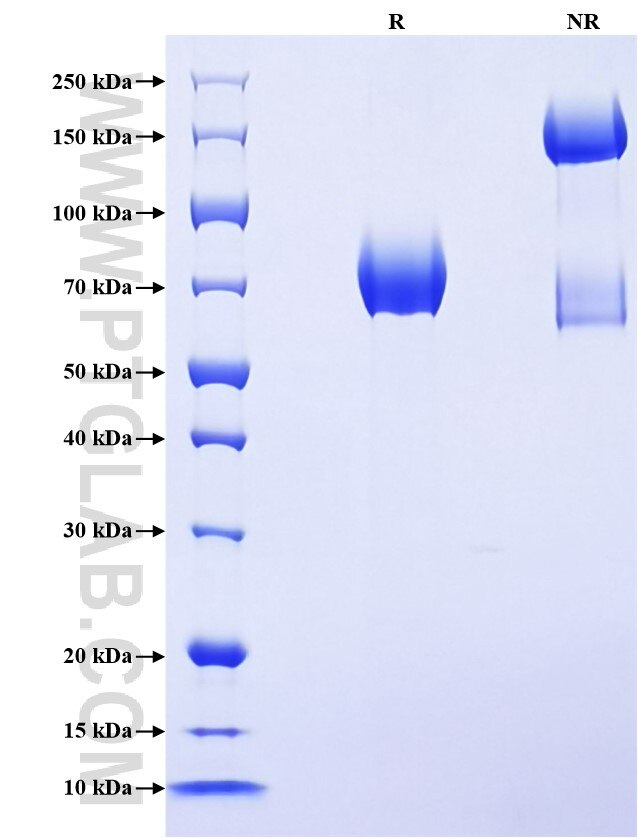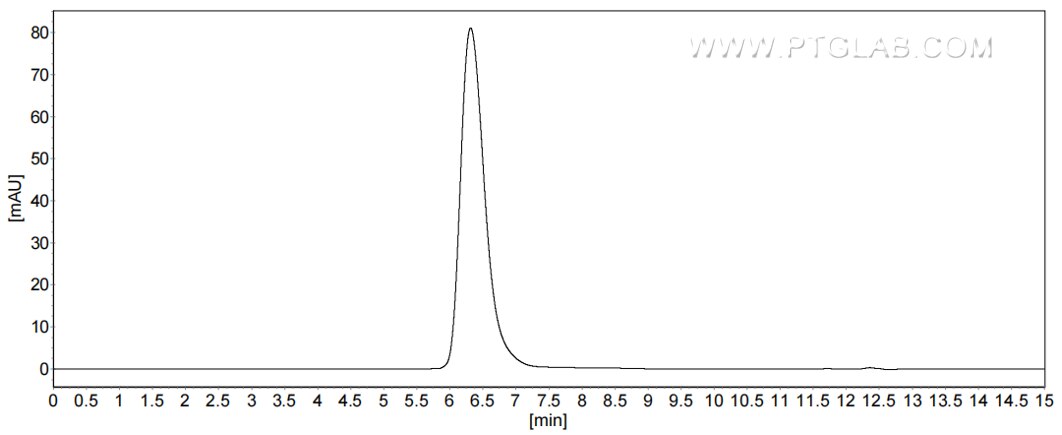Recombinant Rat CD44 protein (rFc Tag) (HPLC verified)
Species
Rat
Purity
>90 %, SDS-PAGE
>90 %, SEC-HPLC
Tag
rFc Tag
Activity
not tested
Cat no : Eg1458
Validation Data Gallery
Product Information
| Purity | >90 %, SDS-PAGE >90 %, SEC-HPLC |
| Endotoxin | <0.1 EU/μg protein, LAL method |
| Activity |
Not tested |
| Expression | HEK293-derived Rat CD44 protein Gln22-Glu271 (Accession# O70509) with a rabbit IgG Fc tag at the C-terminus. |
| GeneID | 25406 |
| Accession | O70509 |
| PredictedSize | 53.3 kDa |
| SDS-PAGE | 62-85 kDa, reducing (R) conditions |
| Formulation | Lyophilized from 0.22 μm filtered solution in PBS, pH 7.4. Normally 5% trehalose and 5% mannitol are added as protectants before lyophilization. |
| Reconstitution | Briefly centrifuge the tube before opening. Reconstitute at 0.1-0.5 mg/mL in sterile water. |
| Storage Conditions |
It is recommended that the protein be aliquoted for optimal storage. Avoid repeated freeze-thaw cycles.
|
| Shipping | The product is shipped at ambient temperature. Upon receipt, store it immediately at the recommended temperature. |
Background
CD44 is a type I transmembrane glycoprotein that mediates cell-cell and cell-matrix interactions through its affinity for hyaluronic acid (HA) and possibly also through its affinity for other ligands. Adhesion with HA plays an important role in cell migration, tumor growth and progression (PMID: 29747682). CD44 is also involved in lymphocyte activation, recirculation and homing, and in hematopoiesis (PMID: 25941526). CD44 serves as an activation marker distinguishing memory and effector T cells from their naive counterparts. It also plays a role in early T cell signaling events, enhancing T cell receptor signaling (PMID: 26172046). This protein exists in multiple forms generated by alternative RNA splicing and extensive post-translational modifications.
References:
1. Chen C. et al. (2018). J Hematol Oncol. 11(1):64. 2. Gutjahr JC. et al. (2015). Front Immunol. 6:177. 3. Schumann J. et al. (2015). PLoS One. 24;10(11):e0143986.


